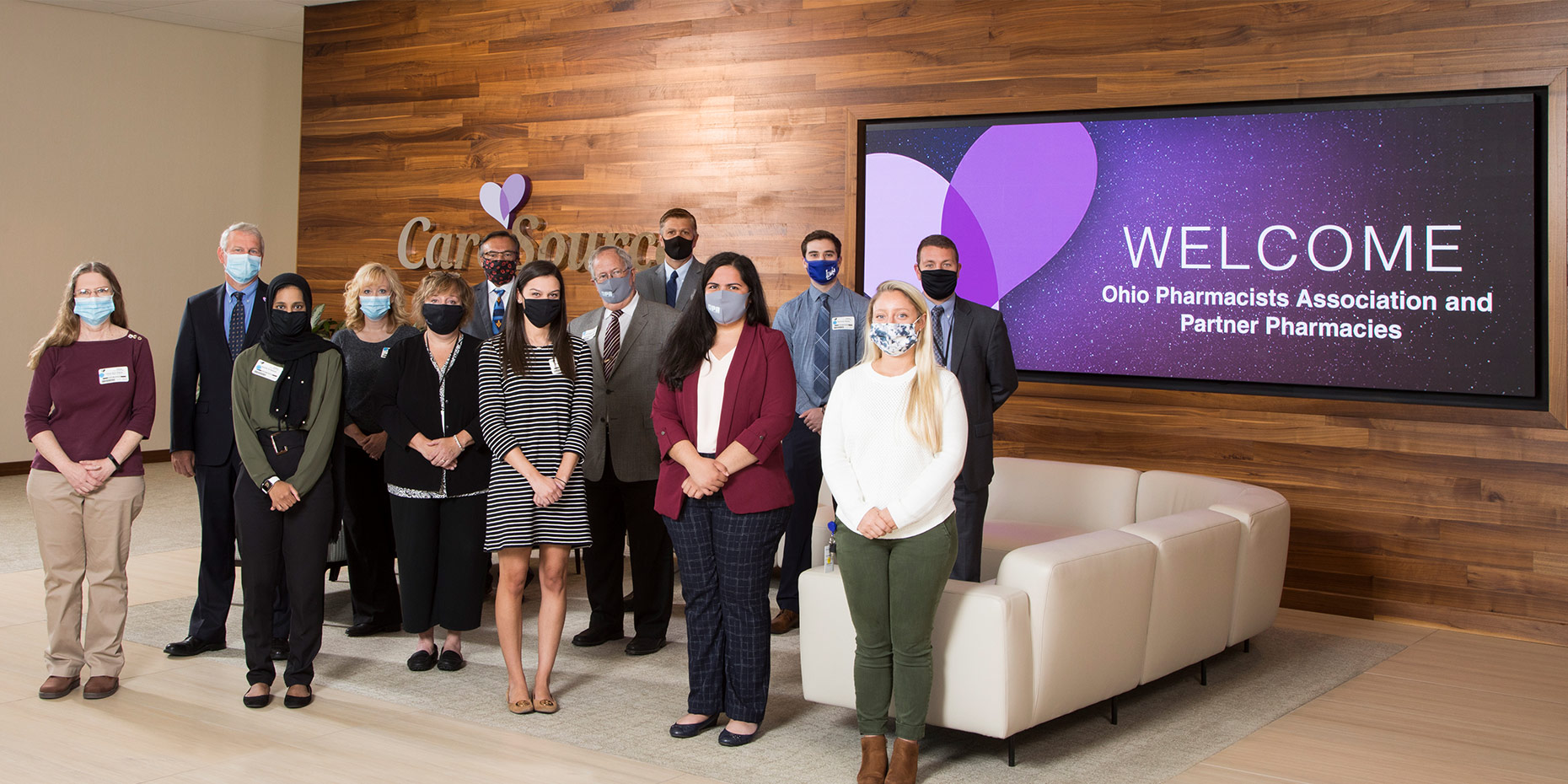Innovations
Pharmacy and State Leaders Tour Sites as Part of CareSource’s Pharmacist Provider Status Pilot
September 25th, 2020 | 2 min read

Earlier this week, representatives from the Ohio Pharmacists Association (OPA) and Ohio State Representative Scott Lipps met at CareSource to learn more about the Pharmacist Provider Status Pilot. CareSource and OPA also used the time to assist the pilot sites with their program workflows and operations, while meeting our partners at their place of work. OPA’s task force and the CareSource residents worked one on one with the pharmacists to provide additional training and support necessary to make the pilot a success.
The Pharmacist Provider Status Pilot program includes two sites near Dayton, Ohio: an independent pharmacy in a rural community, Camden Village Pharmacy, and an inner-city independent pharmacy, ZIKS Pharmacy. Kettering Health Network is also involved in the program. The OPA has been instrumental in developing template collaborative practice agreements, developing care plans for the four disease states and providing training and support to the independent pharmacy sites participating in the pilot
Pharmacists involved in the pilot have collaborative practice agreements with physicians, nurse practitioners, or physician assistance, and the pharmacists will focus on CareSource patients that they have identified as being at high-risk or in need of care for tobacco cessation, opioid management, diabetes, and/or asthma. The participating pharmacies are some of the first pharmacists in the country able to bill for these types of services.
CareSource’s Pharmacist Provider Status Pilot program was covered in the October 2020 Edition of Modern Healthcare.
“CareSource is committed to improving health outcomes and expanding access to care for our members,” said Nicholas Trego, PharmD, RPh the Associate Vice President of Pharmacy in CareSource’s Ohio Market. “Pharmacists have a great relationship with both the patients and doctors in their area so they can provide support the patient needs even when a doctor’s appointment may be several months away. Ultimately, this model can save physician time for diagnostic and acute visits by allowing the pharmacist to see patients for medication-related health care visits.”
Partnering with local pharmacies to pay for clinical services allows pharmacists to capitalize on their education, training and access to patients while offering a reimbursement methodology that is not controlled by the pharmacy benefits managers.


